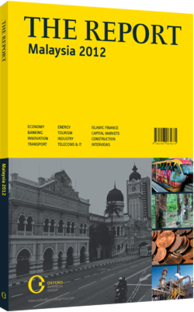City links: The Mass Rapid Transit project will transform urban transport in the Klang Valley
The biggest infrastructure project to date has kicked off, bringing major contractors a raft of attractive contracts and knock-on developments. With a price of RM50bn-70bn ($16.1bn-22.6bn), the long-overdue Klang Valley Mass Rapid Transit (MRT) encompasses both the greatest ambitions of the government-led economic transformation plans, as well as the political challenges inherent in an initiative this big.
PHASES: First up will be the Sungai Buloh-Kajang (SBK) line, which will run 51 km through the city and into Selangor province. By September 2012, 45 of 85 contract packages worth RM20bn ($6.5bn) had been awarded, while additional contracts were expected to be awarded by the end of 2013. The targeted price tag for the SBK line will not be known until the end of 2012, but has been estimated at between RM30bn ($9.7bn) and RM50bn ($16.1bn). Construction on the line started in August 2012 and is expected to continue into 2017. Contractors are gearing up for the second and third phases, which will include the construction of the KL City Circle Line and a north-south line from Selayang to Putrajaya. According to the Land Public Transport Commission, the feasibility studies for both projects will be completed by early 2013, with project roll-outs, at least for the Circle Line, by the end of the year. The MRT project will be financed by the government, which announced an RM8bn ($2.6bn) sukuk issuance in July 2012 to raise funds. MRT Corporation, the government entity responsible for implementing the project, is working through a designated project delivery partner, which is a joint venture between construction giant Gamuda and the conglomerate MMC. Under the deal finalised in February 2012, MMC Gamuda is designing the project, advising on tender awards and picking up any slack in uncompleted projects, but its parent companies cannot bid for most of the contract packages. The exception is the RM8.2bn ($2.6bn) tunnelling contract, which MMC Gamuda won as expected in early 2012. The joint venture will also receive a fee of up to 6% of the sum of all project contracts, excluding its own tunnel contract, depending on timeliness and on whether the total cost exceeds the targeted cost determined by the end of the year. The contract also includes up to RM2.85bn ($919.4m) in “reimbursable” overhead costs, and a 15% “contingency” buffer in case the projects slightly exceed their targeted cost.
THE CONTRACT: The contract’s structure, which effectively guarantees MMC Gamuda RM4bn ($1.3bn) for project management (in addition to the tunnelling work), has been criticised as wasteful by the government’s political opponents. They argue that MMC Gamuda has the incentive to utilise all of the 15% contingency, while the government has pointed out that use of the contingency requires MRT Corp’s approval, and that such provisions are a staple of large construction contracts. Other aspects of the contract process, however, have been just as controversial. Three companies dropped out of the bidding for the RM1.6bn ($516.2m) driverless electric train package in May 2012, with several citing their belief that the Chinese locomotive company CSR Zhuzhou had the inside track for the tender. Though Siemens eventually won that contract the dispute echoed the controversy that flared up in July, when a consortium led by George Kent, a local water infrastructure firm with no experience in rail, was awarded the lead contract for the extension of the Ampang light-rail transit (LRT) line. Allegations that George Kent won the contract due to government connections, without having offering the lowest bid, have caused controversy. Finally, the quota of 30% of packages reserved for bumiputera-owned (indigenous-owned) builders are anticipated to raise the cost of the overall project.
Developers are expecting the MRT and related projects to have a significant impact on the Klang Valley’s residential and commercial markets. The Performance Management and Delivery Unit’s goal of boosting the modal share of public transport from 12% to 50% in Greater Kuala Lumpur by 2020, if achieved, would allow Malaysians to find affordable housing in Selangor within a reasonable commute from central business districts.
You have reached the limit of premium articles you can view for free.
Choose from the options below to purchase print or digital editions of our Reports. You can also purchase a website subscription giving you unlimited access to all of our Reports online for 12 months.
If you have already purchased this Report or have a website subscription, please login to continue.

